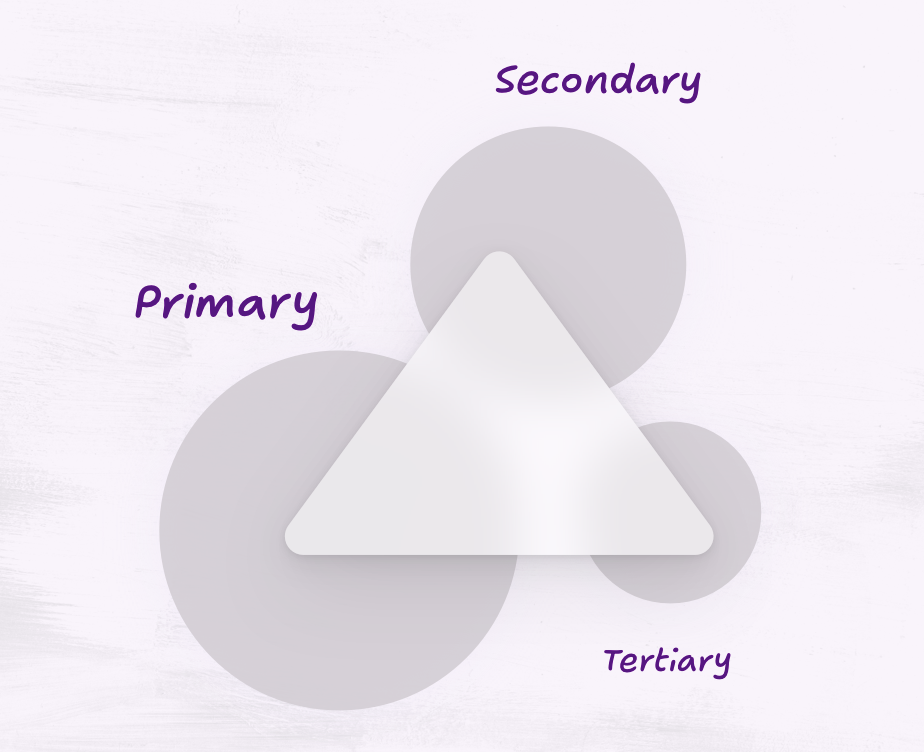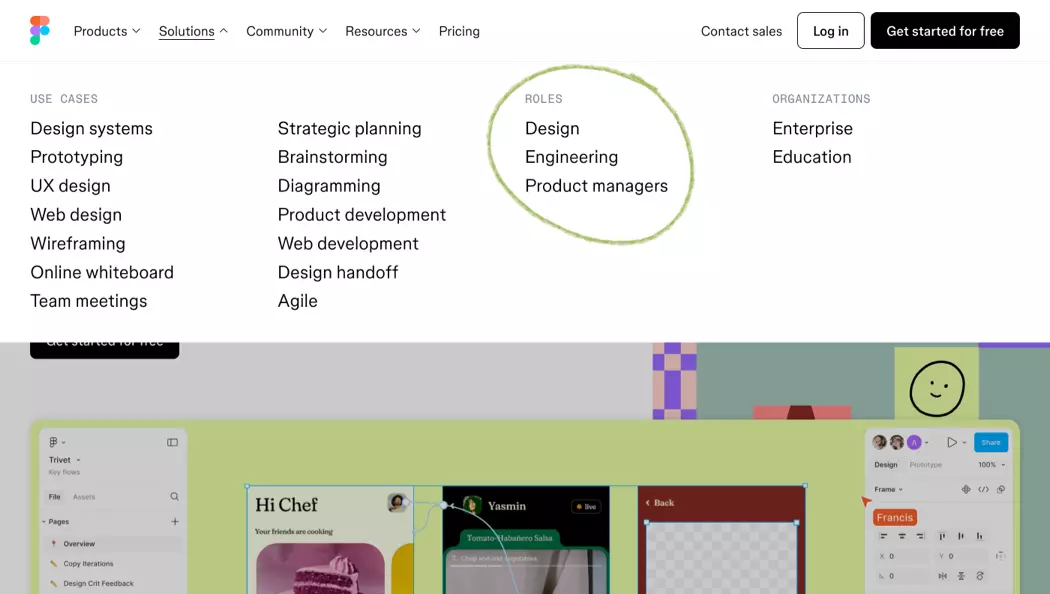Target Audience, a Designer's Take
Posted Jul 2024
Why do we need to know our target audience? What is exactly? How is it used? And how do we define it?

If you aim to go somewhere and, unlike Alice, you want to walk short enough – having a target is crucial.
The Robot Show Podcast
Why read when you can listen? This NotebookLM show covers the article with an energetic, over-the-top, nauseating North American speech.
Context Matters
Imagine you’re at a medical doctors’ conference.
Which of the following two products do you think would sell the most?
An app for managing patients or a new tool for scarless stitches?
“Why not both?” you might ask.
But what if you knew it was a conference for Surgeons?
Or what if I told you it was a conference for Health Administration?
Knowing which type of doctor the conference is for would likely change your answer, right?
Why Target Audience?
Knowing your target audience is basic knowledge for any service or product – without it, you might just waste your time. Simply put:
Target audience is who you focus your marketing and product efforts on.
The benefits of identifying a target audience are that it helps your product endeavors and your marketing campaigns by being more focused – everything that makes you and your organization more focused is a blessing.
Some of the benefits are:
- Better Messaging:
Develop more effective marketing messages and campaigns by tailoring communication to resonate with your audience's specific needs, interests, and pain points. - Effective Marketing Resource Allocation:
Allocate resources efficiently by spending your marketing budget on channels and activities that are most likely to reach your target audience. - Improved Product and Service Development:
By knowing your audience, you can create products and services that truly meet their needs. Understanding what features and benefits matter most to your target customers allows you to focus on delivering them. - A Stronger Brand Identity:
Setting a target audience helps clarify and solidify your brand identity, making it easier to communicate who you are and what you stand for, ultimately leading to stronger customer loyalty. - Create User Personas
Your target audience provides the foundation for creating detailed user personas, offering a more granular understanding of your ideal customers.
What is Target Audience?
A target audience is a focused group of people – an ideal group of go-to customers – that a brand identifies as most likely to be interested in their products or services and aims to reach directly with their advertising efforts.
Target audiences shares similar attributes – such as interests, context, or needs – and it addresses goals, jobs to be done, or unmet needs.
This group shares certain characteristics, to name a few:
- Demographics:
Age, gender, income, location, education, or family status - Psychographics:
Values, interests, hobbies, lifestyle, or personality traits - Behavioral factors:
Purchasing habits, media consumption, or online activity - Professional factors:
Role, position, industry, job responsibilities, or purchase decisions - Technographic factors:
Preferred devices, software usage, tech-savviness, or adoption - Cultural factors:
Language, ethnicity, cultural values, traditions, or social norms
Groups in Target Audience
It’s important to recognize that there is more than one target audience. Usually, ideas or products don’t address only one group of people.
The audience is comprised of many people sharing similar attributes or needs, which can be wide or narrow.
Let’s take, for example, heavy metal music – are all its listeners the same? No, we have sub-genres like Thrash, Grunge, Death, Black, Power, Doom, Gothic, Symphonic, Progressive, Folk, Nu, Industrial, Metalcore, Deathcore, Sludge, Stoner, Groove, Avant-garde, and Alternative Metal – each attracting different audiences. Some don’t overlap at all; some really despise other sub-genres. If you misdiagnose the groups, you might hurt your efforts.
In heavy metal music, we can take our group segmentation even further; why just Listeners? What about Musicians? Would you put a drummer and a guitarist in the same group? A prog-rock and a Stoner guitarist in the same group?
 Harald Nævdal from Immortal and James Hetfield from Metallica
Harald Nævdal from Immortal and James Hetfield from Metallica
Although Harald Nævdal from Immortal and James Hetfield from Metallica share similar attributes, it would be risky to assume they are in the same group or that their fans are in the same group.
Primary, Secondary & Tertiary Groups
We usually divide our audience into two or three groups.
The overlap between these audiences forms your target audience.
Below I've written down some examples of the three groups of a typical target audience for you to better understand.
 Groups of a typical target audience
Groups of a typical target audience
Example: Managing Patients App
If we think about the app for managing patients from before, then executive doctors' roles like Chief Medical Officers, Medical Directors, or Physician Executives are the most relevant group and will act as our Primary target audience.
Financial roles within the healthcare industry like CFOs, Directors of Finance, and Treasurers are relevant to purchasing, and they will act as our Secondary target audience.
Lastly, roles that focus on service design and patient experience, like Chief Experience Officers, Patient Experience Managers, and Service Designers, should be relevant because these apps will impact the patient experience. They will be our Tertiary target audience.
Three groups!
Example: Addressing Different Audiences, Figma & Sketch
Let’s look at Figma – they say the product is used by three different teams, or roles: Design, Engineering, and Product. We can clearly see them as different target audiences, and though it’s plain to see that Designers are the Primary target audience, they haven’t skipped the other groups.
 Roles in Figma
Roles in Figma
And again, the aim is to:
- Prioritize the marketing and product efforts. Thus, giving the appropriate groups the right amounts of focus to gain the most effective results.
- Inform users about your product or service in the right manner.
- Make your product or service more relevant and engaging.
And we can go even deeper still and break each audience into its own groups.
Let's take Sketch, for example. Like Figma, they support additional groups other than designers. But we can see that within the designers' Primary target audience, they show specific use cases like Websites, Prototyping, Icons, Feedback, Apps, Symbols, Illustrations & Design Systems. So if you're a magazine layout designer, this isn't your cup of tea.
 Sketch target audience in design
Sketch target audience in design
Example: Targeting Different Audiences, Monday.com
A great example of a product addressing multiple target audiences is monday.com's campaign from 2018. This project management tool tailors its marketing to different user types, demonstrating how one product can cater to various needs and preferences.
By tailoring their marketing messages, monday.com can effectively engage and convert different audience segments.
How to Define Target Audience
Defining your target audience is a critical step in crafting a successful brand strategy. It’s not just about guessing who might be interested in your product or service – it’s about using data, insights, and informed observations to pinpoint exactly who your ideal customers are. This process involves a combination of reviewing your current customer base, engaging with key stakeholders, and applying both heuristic thinking and thorough research. Below are some practical steps to help you accurately define your target audience.
Review Customer Base
Though this one is relevant only to a working business, and it’s quite obvious. An easy way to see the target audience current situation is just review who drives your sales, which group uses the product the most, or who are the ones who sign the contracts. It could be just as you expected, or you could be surprised. Either way, it's a low-hanging fruit.
Talk with Stakeholders and People of Interest
If you’re in a working business, go and talk with stakeholders. If you’re not, go and talk with people of interest from this field – especially from sales. They can give you insight into who drives your sales or which group uses the product the most. This is the easiest way to see the current situation.
Heuristics and Research
Use your common sense! The data is there; you just need to find it in every way possible, play with it, manipulate it, and try to think about it from surprising angles (be the devil's advocate, use the Five Ws, do some Product Research, Card Sorting, or User Research). Competitive Analysis is always important, or review your Analytics if you have any.
Things to Keep in Mind
Number of Groups
Three groups is the magic number 👌
Dividing into more than three groups can lead to distraction and dispersal:
- Distraction:
Addressing too wide an audience can spread your efforts too thin and lead to inefficiency. - Dispersal:
Spreading your marketing message too wide makes it loose and unfocused, leading to a lack of trust from prospects.
Dividing into less than two groups can limit diversity and adaptability:
- Diversity:
As Motoko Kusanagi said; "overspecialize, and you breed in weakness". It’s best to see your product or service from multiple perspectives. - Adaptability:
Your product or service will likely be used in unexpected ways. Embracing this reality makes you more resilient.
Different Audiences in the Same Organization
Even within the same company, different groups might have different target audiences depending on their objectives. It could be counterintuitive, but the target audience can differ by need or group in the organization.
Here’s an example I experienced personally:
Right now (2024), I’m leading the product design at Pepperi, and in the last year, I’ve also been helping management to fine-tune and explore Pepperi's brand. This led to a realization which is both surprising and obvious once it set in: the target audience for the Product team is different from the target audience of the Marketing and Sales teams.
The Marketing and Sales target audience are decision-makers or managers who will probably never use the product itself. Meanwhile, the Product’s target audience comprises people who actually uses Pepperi platform day in and day out. For the most part, they have no overlap, not in terms of messaging, motivations nor features.
It's Not Just About Demographics
While demographics are important, they only paint part of the picture. Psychographics and behavioral factors can be just as important in defining your target audience.
Target Audience Evolves Over Time
As your brand grows and changes, your target audience may need to be re-evaluated and refined.
The Reverse Funnel
As a rule of thumb, when a product or service starts, it usually addresses a narrow target audience with specific groups. As the brand grows, usually the target audience becomes wider and the groups more common.
We can actually see it in brands logos – how they start unique and, over time, consolidate into something more homogeneous to address a wider audiences. This is just a visual aspect, but it happens company-wide.
 Logo evolution, turning more homogeneous to address a wider target audience
Logo evolution, turning more homogeneous to address a wider target audience
Summary
Understanding and defining your target audience is crucial for creating effective marketing strategies and product designs. By focusing on specific demographic, geographic, psychographic, and behavioral factors, you can tailor your business offerings to meet the needs and preferences for your ideal customer.
This targeted approach not only enhances communication but also improves overall engagement and conversion rates. Whether you’re launching a new product or refining your marketing efforts, a well-defined target audience is the key to success.
Next Steps
Crafting a Brand, a Designer's Take
This doc is part of a larger series called Crafting a Brand: A Designer’s Take, where I explore various topics in brand design, including how to define brand vision, values, mission, and promise, set a brand personality, insights on brand naming, how to write user personas, and how to create a brand book. Stay tuned for updates!
Work in Progress
This doc is a WIP – Expect updates soon!